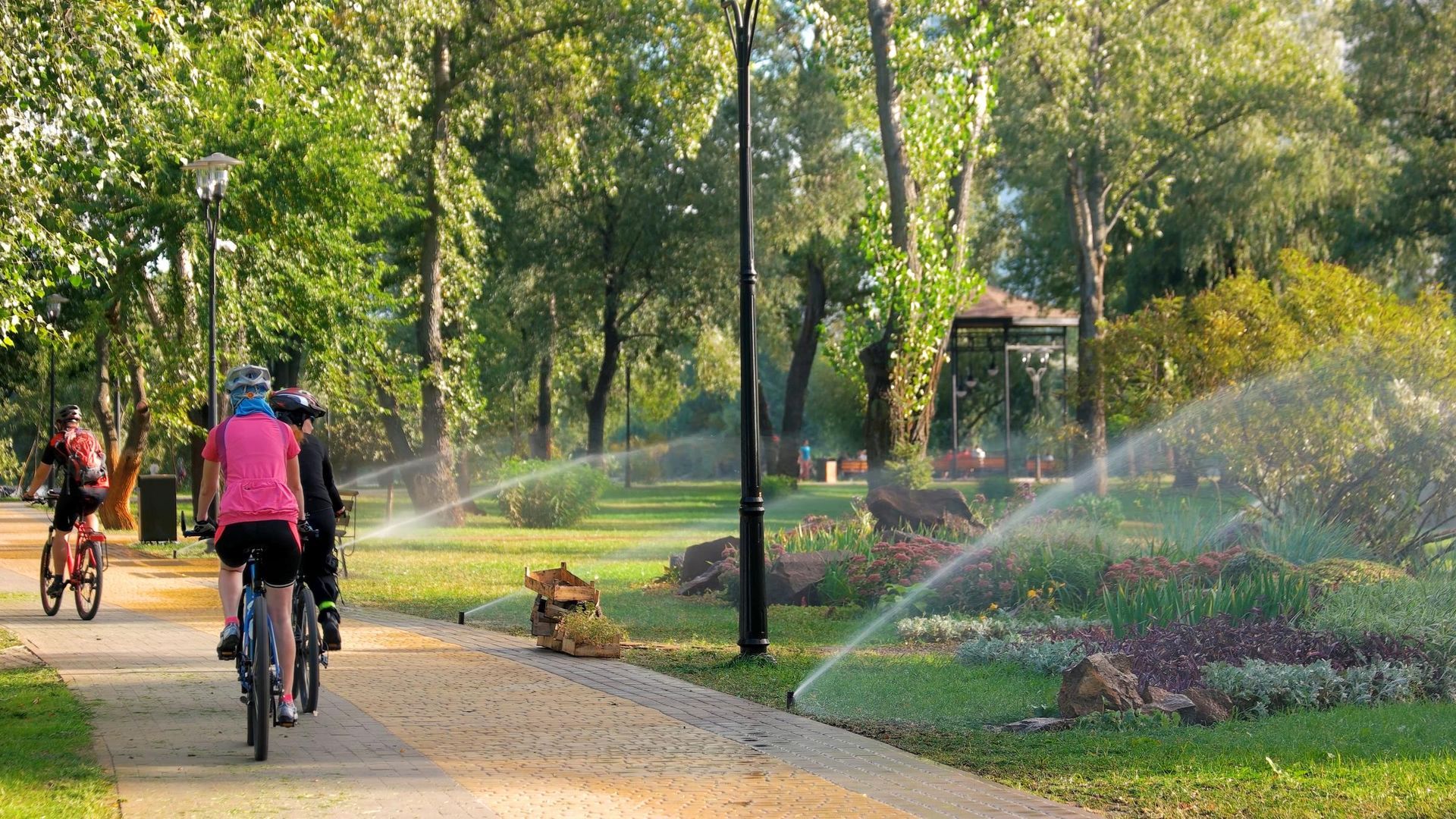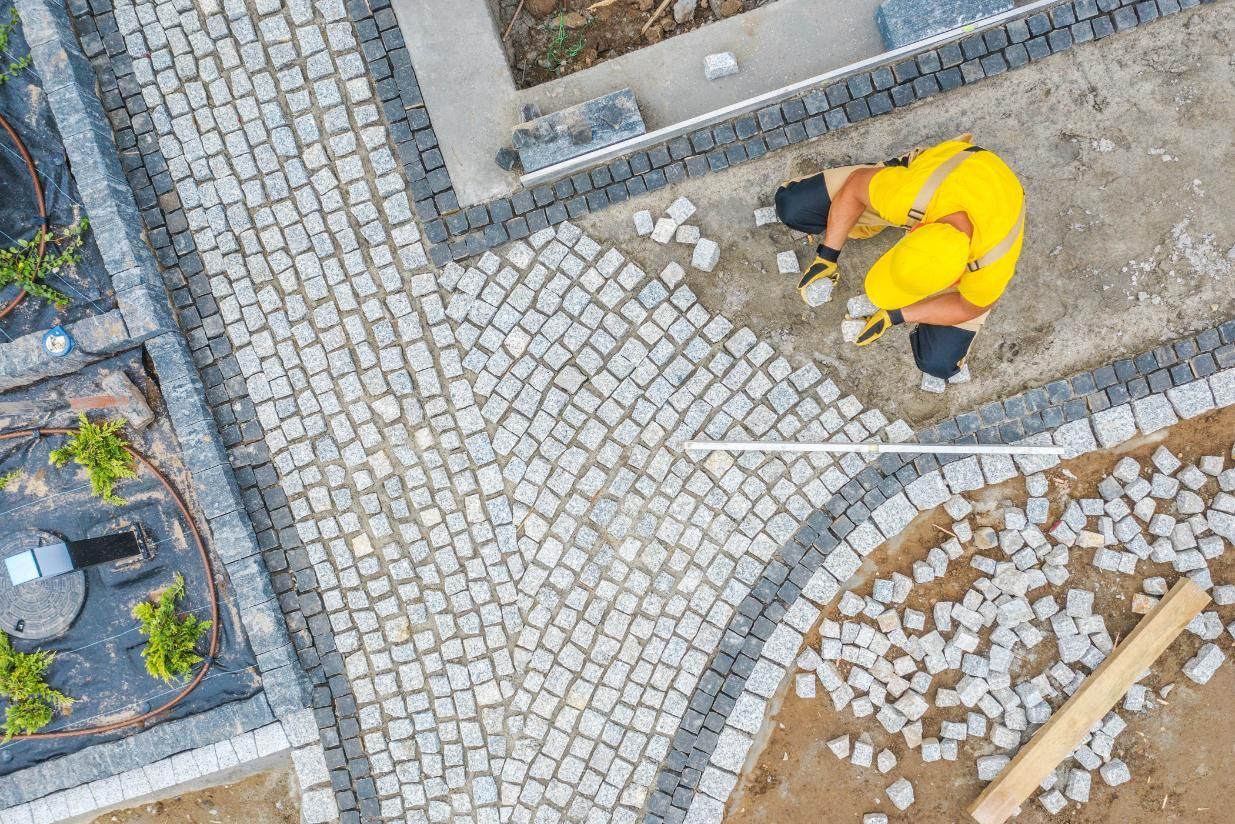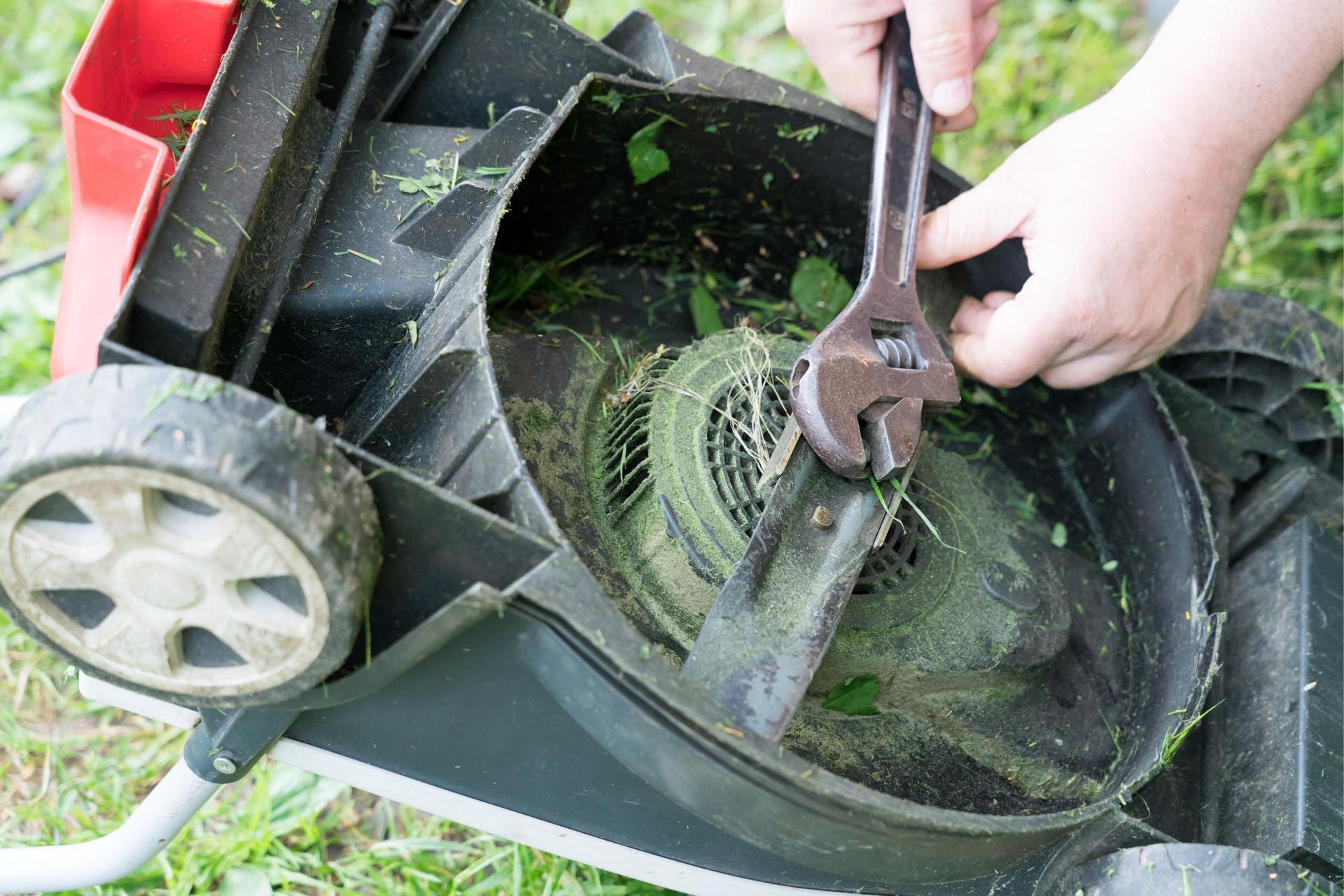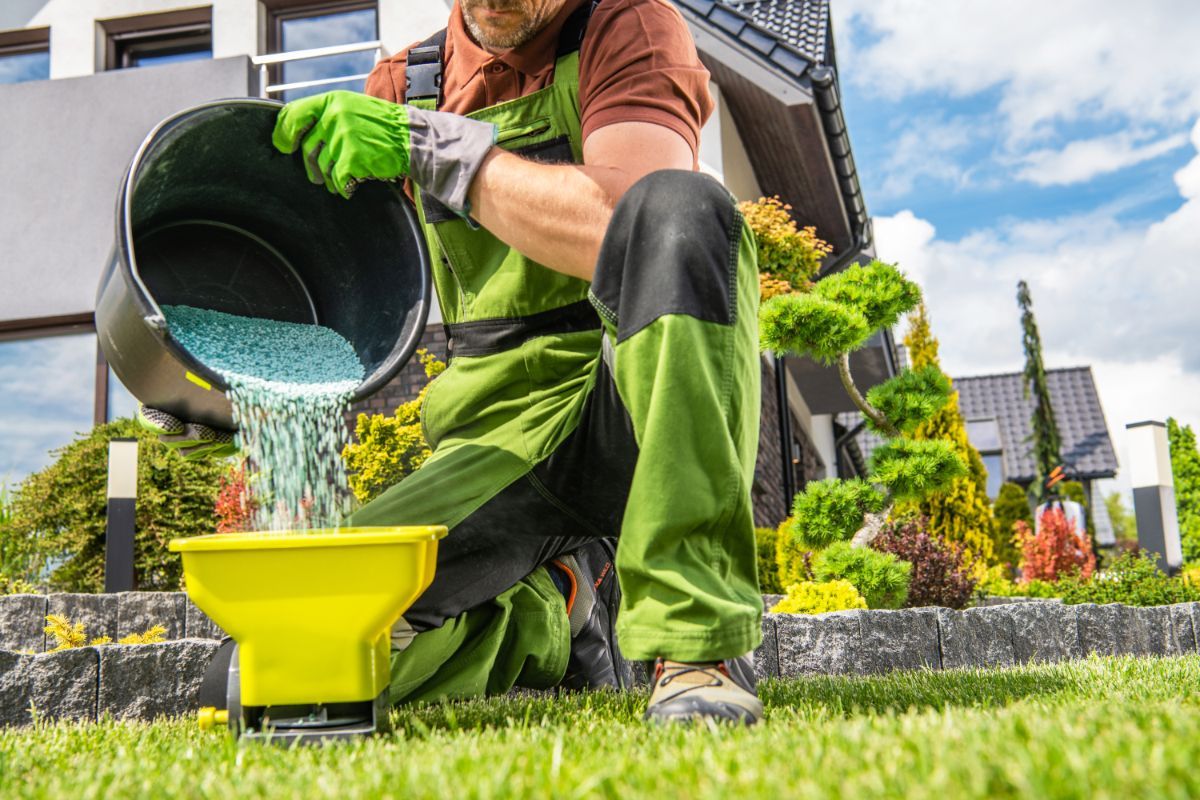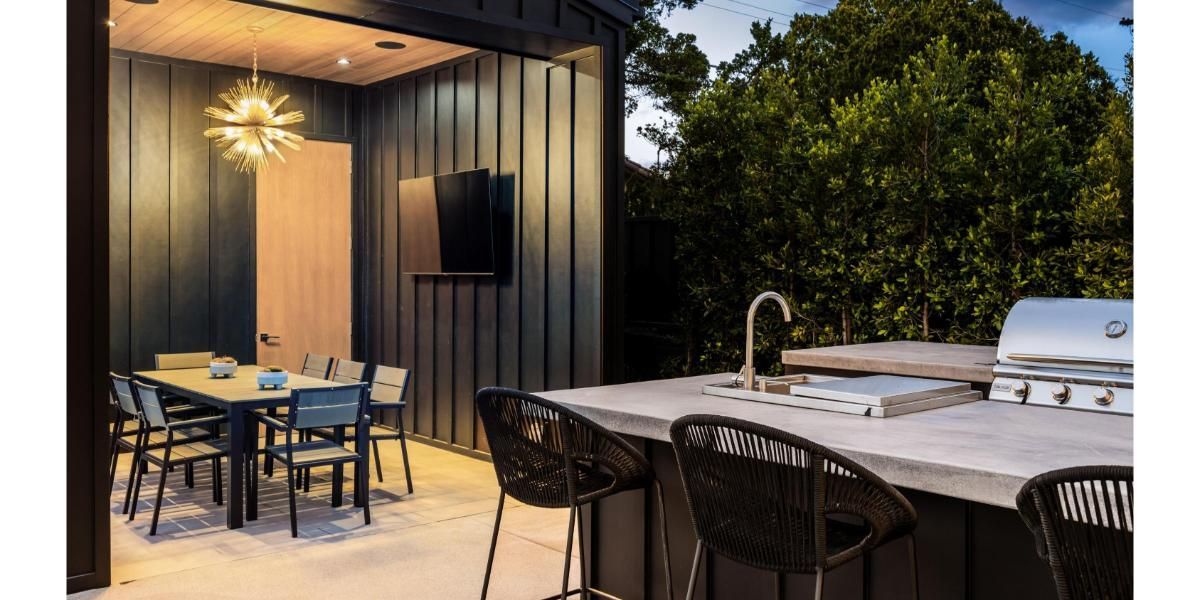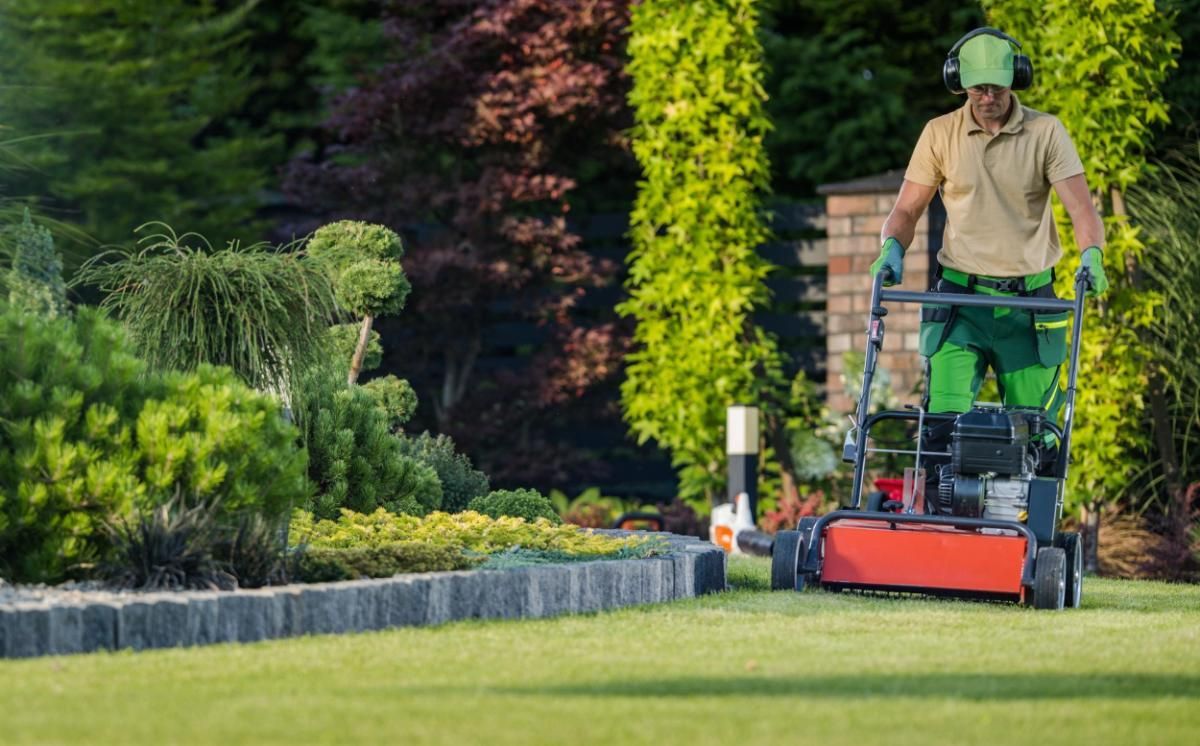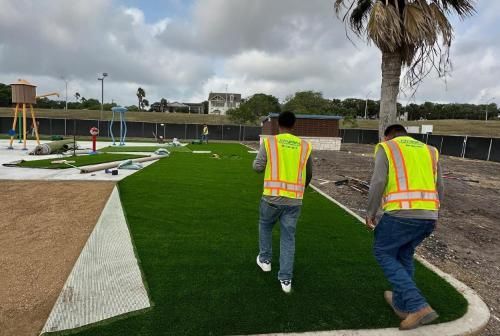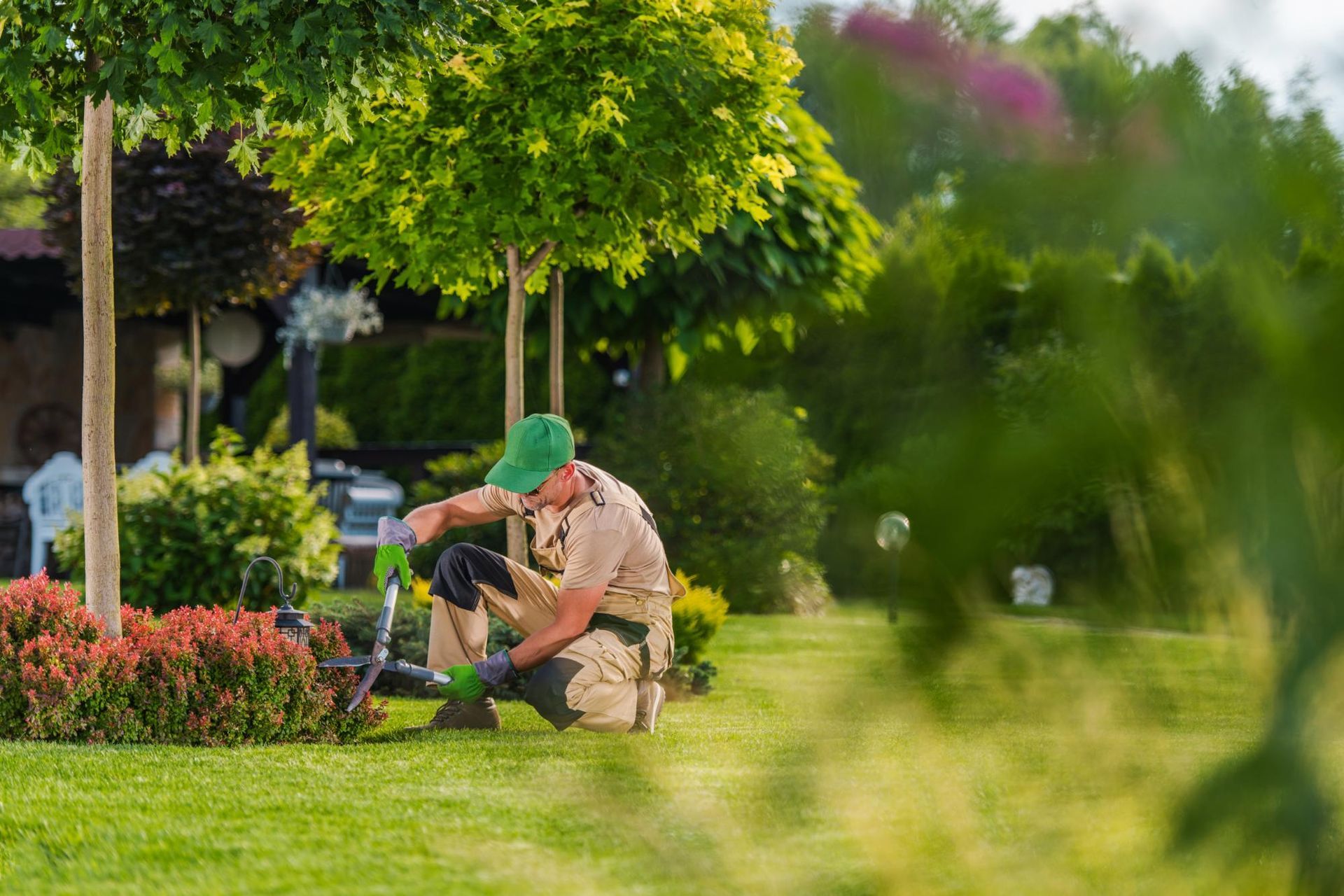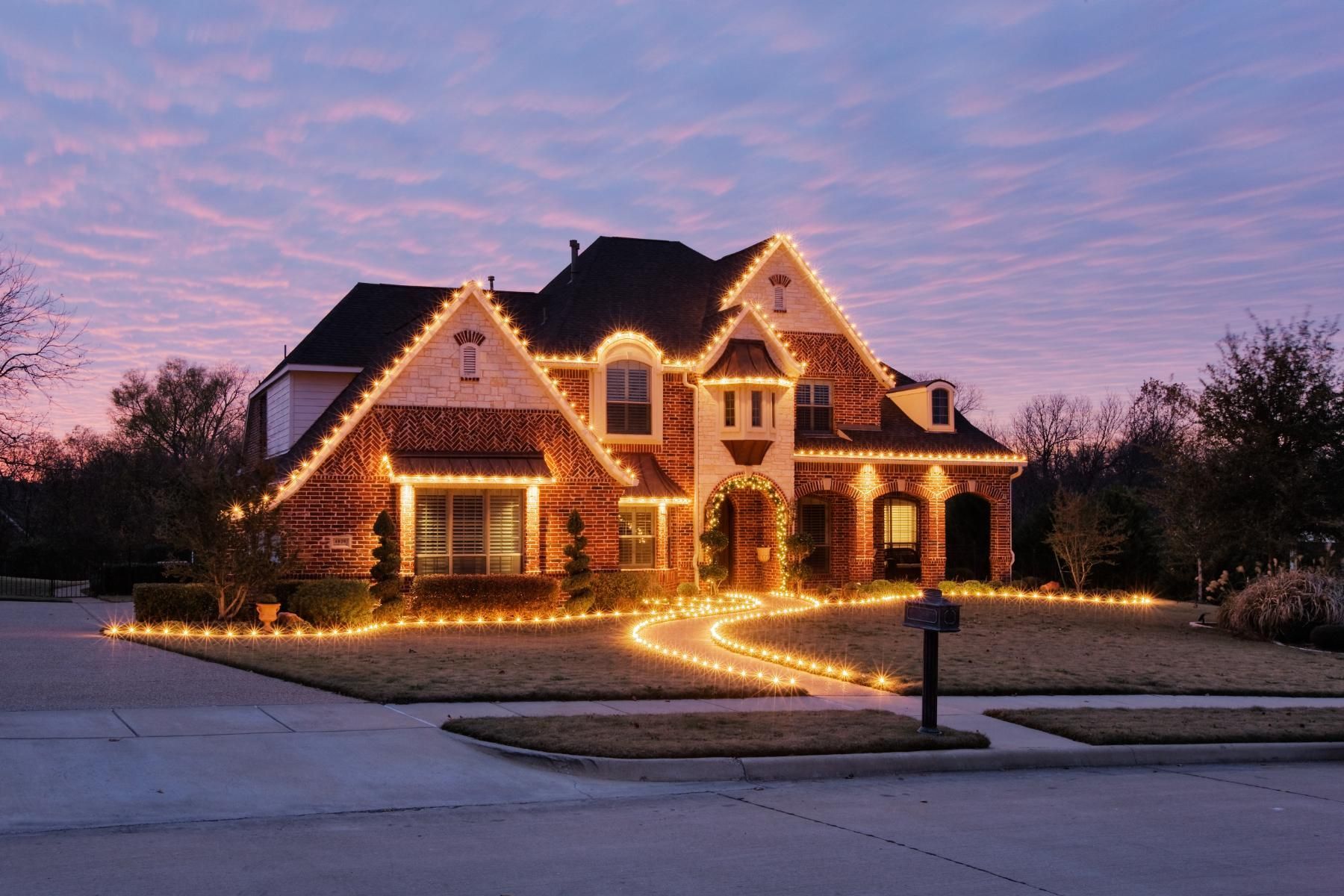Top Retaining Wall Ideas to Transform Your Outdoor Space
Need to control soil erosion or create more usable space in your yard? A retaining wall is the solution. In this guide, you’ll learn about different types of retaining walls, their benefits, and design considerations to make the most of your outdoor area.
Key Takeaways
- Retaining walls are vital for stabilizing sloped terrains, preventing soil erosion, and creating usable outdoor spaces.
- There are four main types of retaining walls: gravity, cantilevered, anchored, and reinforced soil, each serving specific structural needs.
- Proper drainage, material selection, and design considerations are crucial for the longevity and effectiveness of retaining walls.
Understanding Retaining Walls
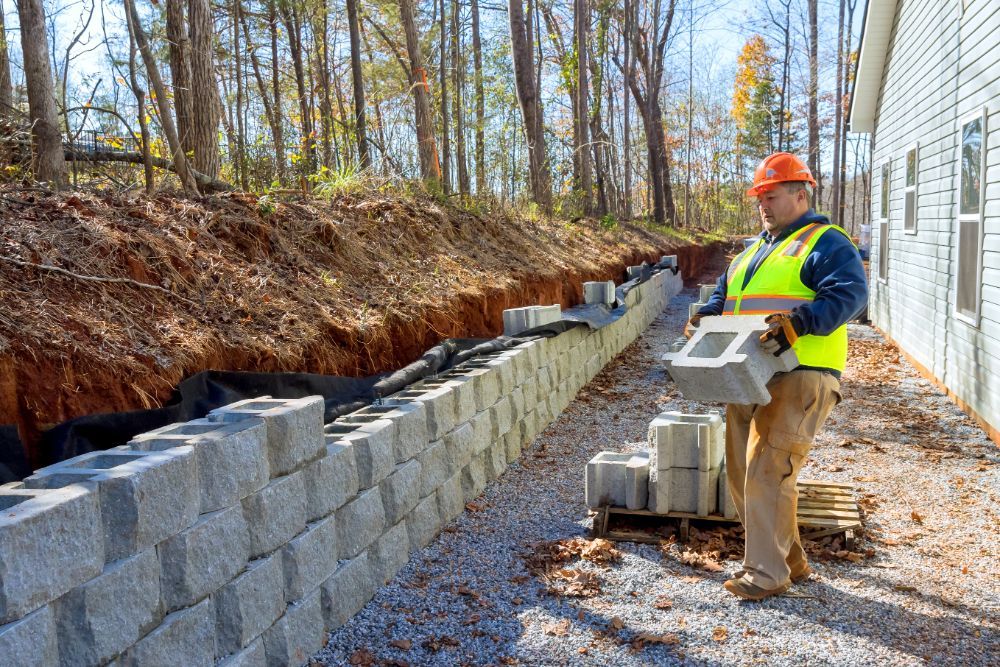
Retaining walls are essential structures designed to create functional areas out of sloped terrain. These structures counteract the lateral earth pressure that pushes against them, keeping the soil stable behind the wall. Whether you want to create a raised patio, enhance privacy, or simply prevent soil erosion, retaining walls serve multiple purposes.
The primary function of retaining walls is to hold back soil at steeper angles than it would naturally support. The design of these walls ensures they can withstand the pressure exerted by the soil, particularly at the base where the force is greatest. This resistance is crucial to prevent the wall from toppling or overturning due to excessive lateral earth pressure. Typically, retaining walls feature a vertical or near-vertical structure to maximize their effectiveness.
Understanding these fundamental aspects of retaining walls is essential as it sets the stage for exploring more detailed topics such as the types of retaining walls available, key design considerations, and how to enhance their aesthetic appeal. With a solid understanding of these fundamentals, making informed decisions for your landscaping project becomes easier.
Key Benefits of Retaining Walls
Retaining walls offer a myriad of benefits that make them an invaluable addition to any outdoor space. One of the primary advantages is their ability to stabilize sloping land, creating flat, usable areas that can be used for planting, outdoor activities, or even building structures. Transforming uneven terrain into functional spaces, retaining walls make your property more usable.
Another significant benefit of retaining walls is their role in preventing soil erosion. Heavy rain, wind, and irrigation can cause soil to erode, leading to unsightly and potentially damaging consequences. Retaining walls act as a barrier, halting erosion and protecting your landscape. Additionally, the inclusion of drainage systems within retaining walls helps direct water away from the structure, further minimizing erosion risks.
Retaining walls also offer aesthetic and functional enhancements. Low retaining walls can double as built-in seating around patios or fire pits, providing a practical and attractive feature for your outdoor space. Tiered retaining walls, in particular, create additional usable space for gardens or seating areas, making your landscape more organized and versatile. Incorporating retaining walls into your landscape design blends beauty and functionality, elevating your outdoor living experience.
Types of Retaining Walls
There are several types of retaining walls, each designed to meet specific needs and conditions. There are four main types of retaining walls. These include gravity retaining walls, cantilever retaining walls, anchored retaining walls, and reinforced soil retaining walls.
Next, we’ll explore gravity retaining walls, cantilevered retaining walls, and anchored retaining walls to highlight their unique characteristics and applications.
Gravity Retaining Walls
Gravity retaining walls rely on their own weight to resist the lateral earth pressure exerted by the soil. Constructed from materials such as concrete, masonry, brick, and concrete blocks, these walls use their mass to provide stability. The wider base and sloped faces of gravity retaining walls enhance their ability to withstand higher lateral earth pressures.
If gravity retaining walls exceed three meters in height, they risk bearing capacity failure. For this reason, they are typically used for smaller applications where their robust structure can effectively restrain the soil.
Proper drainage solutions, such as incorporating drainage pipes and weep holes, are also crucial to prevent hydrostatic pressure buildup behind the wall. When designed and constructed correctly, gravity retaining walls can create terraces and functional spaces while blending seamlessly into the landscape.
Cantilevered Retaining Walls
Cantilevered retaining walls are designed to convert horizontal pressures from the soil into vertical pressures, effectively using leverage to maintain stability. These walls are typically constructed from reinforced concrete, which provides the necessary strength to withstand soil pressure. The design of cantilevered retaining walls includes a vertical stem and a horizontal base slab that extends back into the soil.
This type of retaining wall is particularly suited for taller applications where gravity walls would be impractical. Utilizing leverage, cantilevered retaining walls support significant loads while maintaining a relatively thin profile.
This makes them ideal for areas where space is limited but strong retaining wall supports are required. Proper construction and reinforcement are essential to ensure the longevity and effectiveness of cantilevered retaining walls in any landscape design.
Anchored Retaining Walls
Anchored retaining walls use cables or stays anchored in the soil or rock behind the wall to provide additional strength and stability. These walls function by extending cables into the backfill, which creates tension to counteract the lateral earth pressures exerted on the wall. This anchoring system allows for the construction of taller and thinner walls compared to traditional retaining walls, making them suitable for areas with limited space.
The design flexibility of anchored retaining walls makes them an excellent choice for challenging landscapes, such as steep slopes or areas with poor soil conditions. By incorporating the anchoring system, these walls can effectively restrain soil and prevent sliding, ensuring the stability of the landscape.
Proper installation and maintenance of the anchoring system are crucial to the long-term performance of anchored retaining walls.
Design Considerations for Retaining Walls
Designing a retaining wall involves several important considerations to ensure its stability and functionality. Key factors include material selection, site conditions, drainage systems, foundation stability, and structural anchoring.
In the following subsections, we will explore these considerations in detail to help you make informed decisions for your retaining wall project.
Material Selection
Choosing the right materials for your retaining wall is crucial for its durability and aesthetic appeal. Options like flagstone, recycled concrete, timber, and modular units offer varying levels of durability and visual interest. Natural stone, for example, enhances durability with its imperfections, creating a unique and long-lasting structure. Reinforced concrete is commonly used for cantilever retaining walls due to its strength and reliability.
Additionally, using permeable materials for backfill allows water to pass through, reducing the risk of pressure buildup behind the wall. Stackable concrete wall blocks can mimic the appearance of stone or masonry, adding an aesthetic touch to your retaining wall.
Incorporating lighting features, such as spotlights or uplighting, can further enhance the visual appeal and safety of your retaining wall design.
Site Conditions
Site conditions play a significant role in the design and construction of retaining walls. The ground’s bearing capacity must be sufficient to support the weight of the wall. Failure to calculate this can lead to excessive settlement or ground failure beneath the wall. For locations with steep gradients, anchored retaining walls can provide effective support.
Excavation and site preparation costs can vary based on terrain and soil conditions, impacting the overall budget. Considering the placement and access to the site is essential to ensure a smooth construction process.
Addressing site conditions ensures a stable and durable retaining wall structure that fits your landscape’s needs.
Structural Requirements
Structural support, drainage, and erosion control are the three key factors in a well-engineered retaining wall. Engineers must analyze lateral earth pressure to prevent structural failure. Implementing drainage solutions, such as a French drain, helps collect and redirect water away from the wall, preventing groundwater and pore pressure buildup.
Proper analysis of ground elevation bearing capacity is crucial to ensure the ground can support the wall’s structure. For walls over two feet high, a civil engineer’s review is necessary to ensure the design meets structural requirements.
Erosion control measures, such as compacted soil and geogrids, help stabilize the ground behind retaining walls, ensuring their long-term durability to retain soil.
Enhancing Aesthetics with Retaining Walls
Retaining walls not only serve a functional purpose but also significantly enhance the aesthetic appeal of your landscape. Incorporating flower beds, tiered designs, and lighting features transforms retaining walls into visually stunning and inviting elements of your outdoor space.
In the following subsections, we will explore these aesthetic enhancements in detail.
Incorporating Flower Beds
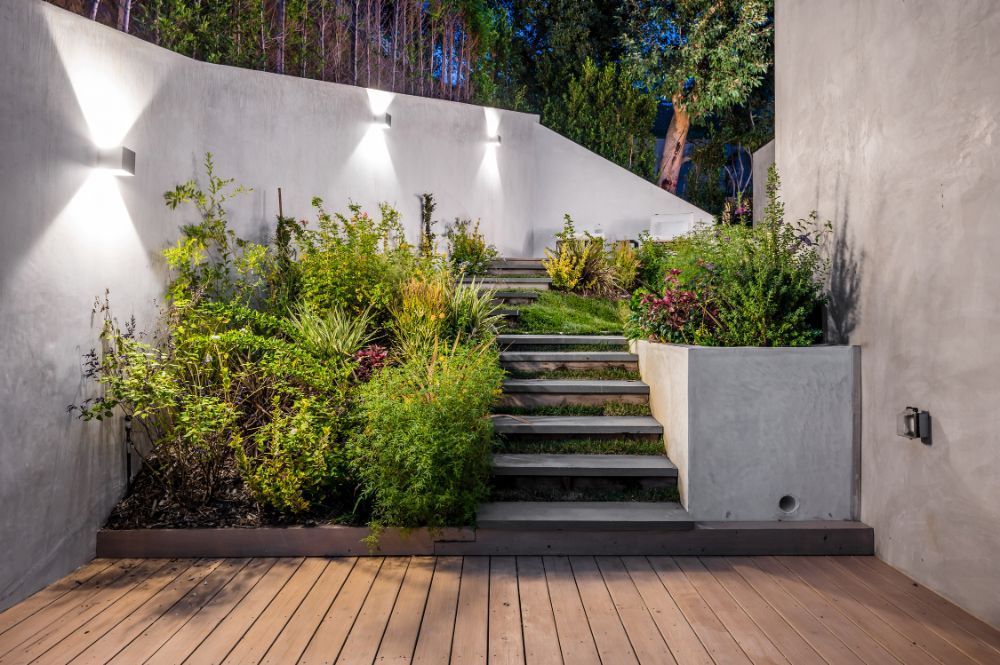
Built-in flower beds within a concrete retaining wall can create a striking contrast between industrial materials and vibrant plant life. These walls can serve as raised garden beds, providing a defined space for cultivating flowers and plants that thrive in such environments. Cascading plants near the top of a retaining wall can soften its edges, creating an inviting visual effect.
Incorporating flowering plants at the base of retaining walls helps transition between hardscapes and softscapes in your landscape design. Using drought-resistant flowers and plants around retaining walls can minimize maintenance while adding colorful accents to the overall design.
Thoughtfully integrated flower beds enhance the beauty and functionality of your retaining wall.
Using Tiered Retaining Walls
Tiered retaining walls are an excellent way to create distinct levels in your landscape, allowing for diverse planting options and visual interest. These small retaining walls help organize the landscape by creating terraces, making it a practical solution for dealing with steep slopes. Each level can be used for various plants, enhancing the overall aesthetic appeal of your outdoor space.
The use of tiered retaining walls adds depth and dimension to your landscape, making it more engaging and visually appealing. This approach allows you to create a dynamic and organized environment that is both functional and beautiful. Tiered designs maximize your outdoor space, adding layers of interest and charm.
Adding Lighting Features
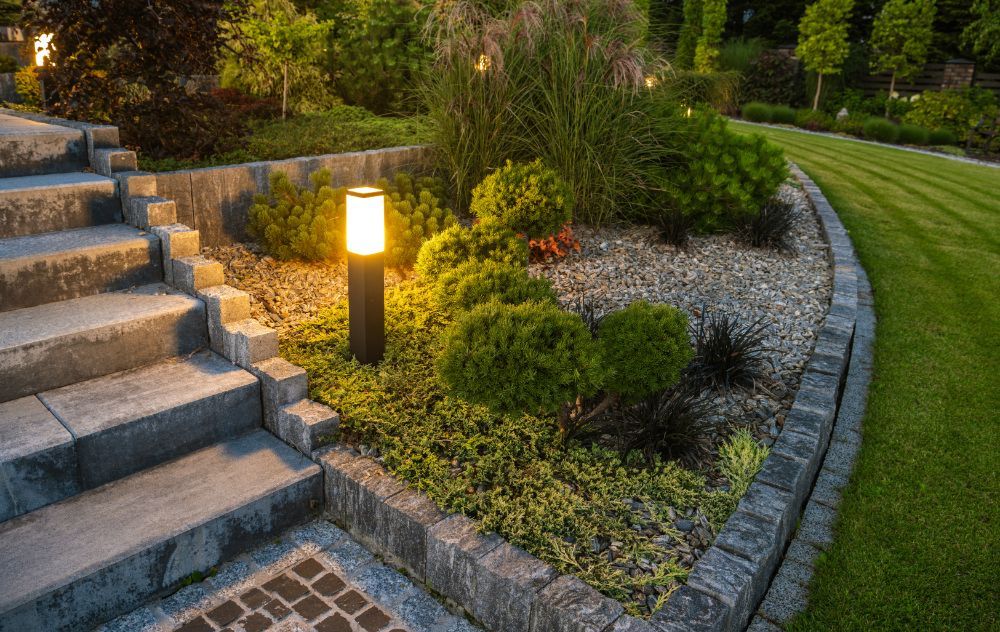
Incorporating lighting features in retaining wall designs not only boosts aesthetic appeal but also increases safety during nighttime. Different types of lighting, such as LED strips, embedded lights, and wall-mounted fixtures, can be effectively used to illuminate retaining walls. Strategically placing lights along the top edge of the wall or embedding them within the wall creates visually striking silhouettes and enhances the overall design.
Adding lighting features highlights the textures and shapes of your retaining walls, making them focal points in your landscape design. Additionally, well-lit retaining walls improve visibility and safety, making your outdoor space more accessible and enjoyable after dark. Consider incorporating various lighting options to enhance both the functionality and beauty of your retaining walls.
Proper Drainage Solutions for Retaining Walls
Effective drainage is crucial for the longevity and structural integrity of retaining walls. Proper drainage solutions prevent the accumulation of water behind the wall, which can lead to increased pressure and potential structural failure. Incorporating drainage pipes within the wall design helps redirect water away from the structure, reducing hydrostatic pressure.
Materials such as free-draining gravel, gravel backfill, and drainage pipe are recommended for effective drainage. Additionally, installing weep holes in the wall allows water to escape, further preventing pressure buildup.
Ensuring proper drainage during the installation process is vital to maintain the functionality and durability of your retaining wall.
Installation and Maintenance Tips
Proper installation is key to the success of any retaining wall project. Begin by marking the area for your wall placement, using wooden stakes and string to outline the desired height. Dig a trench with a recommended depth of eight inches to provide a stable foundation for the wall. Ensure the first row of blocks is partially underground for necessary anchoring and strength.
Regular maintenance is essential to keep your retaining wall in optimal condition. Monitor for cracks, as they can lead to significant structural issues if left unattended. Reinforce weak areas around the wall and remove organic debris to prevent staining and material deterioration.
Sealing materials can protect the wall from water damage, extending its lifespan. Adhering to these installation and maintenance tips ensures the longevity and stability of your retaining wall.
Cost Considerations and Budgeting
Investing in retaining walls can significantly increase your property’s value, sometimes by as much as 20%. However, several factors impact the cost of a retaining wall project, including the height and length of the wall, the complexity of the design, and the materials used. Obtaining necessary permits and undergoing inspections can also introduce additional fees.
To set a realistic budget, consider all materials, labor, and any unforeseen expenses. Estimating costs using a per square foot or per linear foot approach can provide a quick financial assessment.
Exploring DIY options can yield savings on labor, but requires careful planning and assessment of personal abilities. Negotiating with contractors can help secure better pricing for materials and services. Careful budgeting and considering cost-effective options help you complete your retaining wall project without breaking the bank.
Summary
Retaining walls are a powerful tool for transforming outdoor spaces, offering numerous benefits such as soil stabilization, erosion control, and increased property value. Understanding the different types of retaining walls, key design considerations, and proper installation and maintenance practices is essential for creating a successful project. Enhancing aesthetics with flower beds, tiered designs, and lighting features can further elevate the beauty and functionality of your landscape.
By carefully planning and budgeting, you can achieve a cost-effective retaining wall project that meets your needs and enhances your outdoor living experience. Whether you are dealing with a small garden or a large landscape overhaul, retaining walls provide a versatile solution to create a stunning and functional space. Embrace the potential of retaining walls and transform your landscape into a masterpiece.
Frequently Asked Questions
